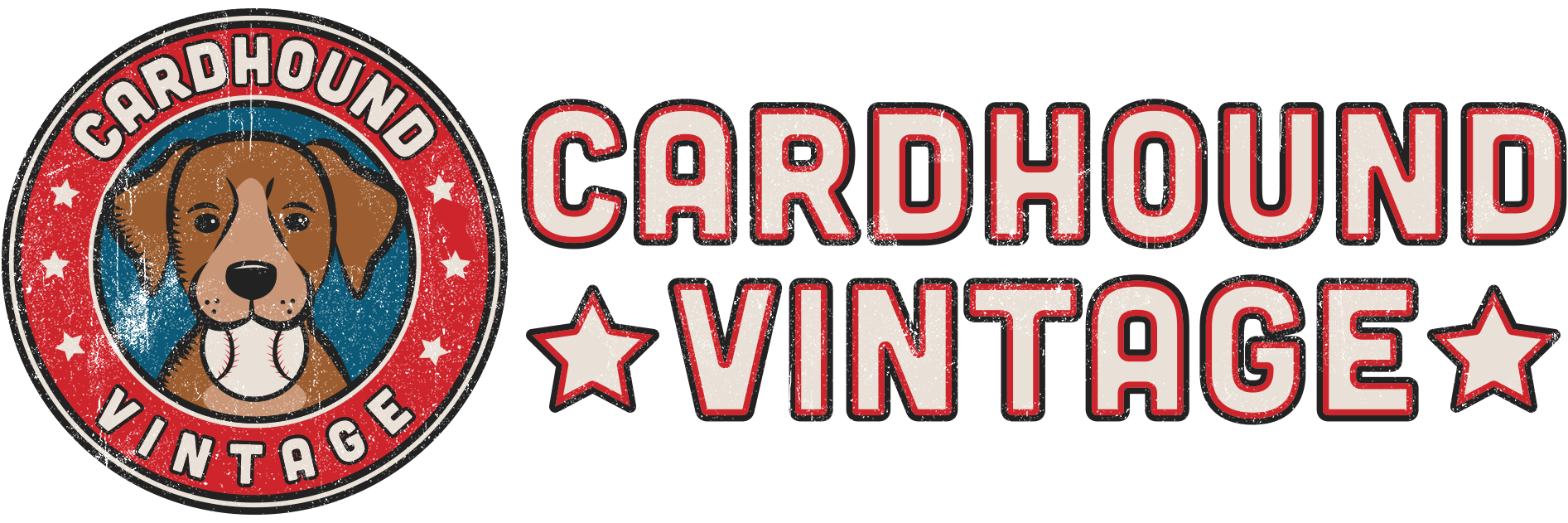In the good old days, almost all of our hobby business occurred in person at card shows. Today, buying and selling sports cards online is much more common. eBay, Facebook, Twitter, Instagram, and more are used by dealers and collectors to buy, sell, and trade cards.
However, navigating the process of listing, selling, packing, and shipping sports cards online can be daunting, especially for those new to the game.
Cardhound has you covered, from determining the best asking price for your cards to choosing the right platform. There are several other factors to consider to maximize your success as a seller. And after the sale, effective packing and shipping is crucial to get the card to its new owner safely.
Getting those first few transactions right is important to help you build a reputation and establish a rapport that will earn repeat customers. Selling cards online isn’t necessarily “difficult” but there are some challenges to be sure. Let’s look at a few of the basics.
Listing and Selling Sports Cards Online

Sample card listing on social media
A successful baseball card listing generally requires the following:
- An accurate description of what you are selling (year, manufacturer, and description of any flaws not clearly visible in photos)
- Good, clear pictures in natural light or glare-free LED–preferably out of plastic–front and back
- A clear description of the sales method, and shipping details and fees
- A reasonable list price or starting bid
Understanding and applying common hobby language is essential. Cardhound has a full review of hobby jargon you can review. It is also important to use hobby terminology for card card condition (very good, excellent, etc.). A review of PSA’s card condition guide will be helpful if needed. Knowledge of condition is also needed to help understand comparable sale prices and choosing a list price.
Listings that do not get good traffic–or that attract trolls–usually have failed in one of these areas: identifying a second-year card as a rookie card; blurry, dark, or upside-down pics; or a crazy list price. If your listings seem solid but still struggle to get traction, Cardhound has some additional tips for you.
Once you have managed to sell your card and have received secure payment, it is time to pack and ship. One cannot over emphasize the importance of good packing and shipping practices both in protecting your assets and in earning trust and repeat business.
Sports Card Packing Tips
Effective packing is simple–which makes it surprising that so many people get it wrong! Here’s a good process for most sports cards–including when submitting cards for professional authentication and grading:
- Sleeve the card in a correct-sized sleeve (order vintage sized sleeves to protect 1956 and earlier Topps cards)
- Place the sleeved card in a Card Saver or Top loader
- Sleeved cards can fall out of top loaders–it is a good practice to secure the top of the top loader in some way. Avoid taping because the card could be damaged by the tape. The preferred route is to put the top loader in a team bag. Another option is to put a small piece of paper on top of the Toploader and then put painter’s tape on top of that. (NOTE: Only use painter’s tape for these purposes. Use of Scotch tape means you are likely going to hell).
- Protect the top loaded cards by cutting two pieces of cardboard slightly bigger than the Toploader and protecting them front and back. Secure the cardboard with painter’s tape.
- Place your cardboard sandwich in a bubble mailer. This will suffice for most cards. For packages valued at $300 or more, consider placing the bubble mailer inside a small priority box for more protection.
Sports Card Shipping Tips
- Insuring the package against loss is the seller’s obligation. If processing many transactions, it is far less expensive to buy a small private insurance policy through a company such as Collectibles Insurance Agency.
- Be sure to read any policy and follow the specific instructions included–for example, if you expect to be reimbursed for a sizable loss, the package may need to be sent with signature confirmation. All insurers have their own requirements.
- Shipping should be via a method agreed upon by both parties at a pre-negotiated price. USPS ground / bubble mailer / tracked is the “standard” for most cards. Upgrades include Priority or even Registered Mail, which is the most expensive but by far the safest option.
- For higher-end sales, adding signature confirmation is recommended as a safeguard against fraud.
Some Advice for Getting Started
I have one main piece of advice for selling sports cards online, and you can thank me later: start small. Don’t launch into selling with a high-end 100 card sale. Instead, start with 1-2 $10-$100 cards. Get the hang of all of the steps detailed above, and earn some trust and build a solid rep in the process. Plus, knowing the basics inside and out protects against scams and fraud, and good packing protects the card both for your sake and for the new owner.





